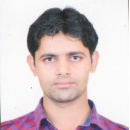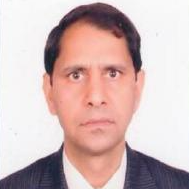International Journal of Computer Network and Information Security (IJCNIS)
IJCNIS Vol. 7, No. 1, 8 Dec. 2014
Cover page and Table of Contents: PDF (size: 656KB)
Performance Evaluation of Distributed Protocols Using Different Levels of Heterogeneity Models in Wireless Sensor Networks
Full Text (PDF, 656KB), PP.38-45
Views: 0 Downloads: 0
Author(s)
Index Terms
Wireless sensor networks, heterogeneity, sensor nodes, sensing range, targets
Abstract
Most of the protocols for enhancing the lifetime of wireless sensor networks (WSNs) are of a homogeneous nature in which all sensors have equal amount of energy level. In this paper, we study the effect of heterogeneity on the homogeneous protocols. The ALBPS and ADEEPS are the two important homogeneous protocols. We incorporate heterogeneity to these protocols, which consists of 2-level, 3-level and multi-level heterogeneity. We simulate and compare the performance of the ALBPS and ADEEPS protocols in homogeneous and heterogeneous environment. The simulation results indicate that heterogeneous protocols prolong the network lifetime as compared to the homogeneous protocols. Furthermore, as the level of heterogeneity increases, the lifetime of the network also increases.
Cite This Paper
Samayveer Singh, Satish Chand, Bijendra Kumar, "Performance Evaluation of Distributed Protocols Using Different Levels of Heterogeneity Models in Wireless Sensor Networks", International Journal of Computer Network and Information Security(IJCNIS), vol.7, no.1, pp.38-45, 2015. DOI:10.5815/ijcnis.2015.01.06
Reference
[1]P. Berman, G. Calinescu, C. Shah and A. Zelikovsky, "Power Efficient Monitoring Management in Sensor Networks," IEEE Wireless Communication and Networking Conference (WCNC'04), pp. 2329-2334, Atlanta, March 2004.
[2]M. Cardei, M.T. Thai, Y. Li, and W. Wu, “Energy-efficient target coverage in wireless sensor networks”, In Proc. of IEEE Infocom, 2005.
[3]M. Cardei, J. Wu, M. Lu, “Improving network lifetime using sensors with adjustable sensing ranges”, International Journal of Sensor Networks, (IJSNET), Vol. 1, No. 1/2, 2006.
[4]Brinza, D. and Zelikovsky, A, “DEEPS: Deterministic Energy-Efficient Protocol for Sensor networks”, ACIS International Workshop on Self-Assembling Wireless Networks (SAWN'06), Proc. of SNPD, pp. 261-266, 2006.
[5]A. Dhawan, A. Aung and S. K. Prasad, "Distributed Scheduling of a Network of Adjustable Range Sensors for Coverage Problems", In ICISTM'2010, International Conference on Information Systems, Technology and Management, 2010 , Springer Link Book Chapter ,Vol. 54, Pages 123-132
[6]Dilip Kumar, T. S. Aseri, R. B. Patel “EEHC: Energy Efficient Heterogeneous Clustered Scheme for Wireless Sensor Networks”, International Journal of Computer Communications, Elsevier, 32(4): 662-667, March 2009.
[7]Yingchi Mao, Zhen Liu, Lili Zhang, Xiaofang Li, "An Effective Data Gathering Scheme in Heterogeneous Energy Wireless Sensor Networks," CSE, vol. 1, pp.338-343, International Conference on Computational Science and Engineering, 2009.
[8]Q. Li, Z. Qingxin, and W. Mingwen, "Design of a Distributed Energy Efficient Clustering Algorithm for Heterogeneous Wireless Sensor Networks", Computer Communications, vol. 29, pp. 2230-7, 2006.
[9]Satish Chand, Samayveer Singh and Bijendra Kumar, "Heterogeneous HEED Protocol for Wireless Sensor Networks", Wireless Personal Communications, vol. 77, issue 3, pp. 2117-2139, Feb 2014.
[10]Samayveer Singh, Satish Chand and Bijendra Kumar, “3-Tier Heterogeneous Network model for Increasing Lifetime in Three Dimensional WSNs,” Quality, Reliability, Security and Robustness in Heterogeneous Networks, Lecture Notes of the Institute for Computer Sciences, Social Informatics and Telecommunications Engineering, vol. 115, pp 238-247, 2013.
[11]D. Kumar, T. C. Aseri and R. B. Patel, “A Novel Multihop Energy Efficient Heterogeneous Clustered Scheme for Wireless Sensor Networks,” Tamkang Journal of Science and Engineering, vol. 14, no. 4, pp. 359-368, 2011.
[12]Samayveer Singh, Satish Chand and Bijendra Kumar, “3-Level Heterogeneity Model for Wireless Sensor Networks,” Int. Journal of Computer Network and Information Security (IJCNIS), vol. 5, no. 4, pp.40-47, April 2013.
[13]Samayveer Singh and Ajay K Sharma, “Distributed Algorithms for Maximizing Lifetime of WSN with Heterogeneity and Adjustable Range for Different Deployment Strategies” I.J. Information Technology and Computer Science, vol.5, no.08, pp.101-108, 2013.
[14]Dilip Kumar, Trilok C. Aseri and R. B. Patel, “EECDA: Energy-Efficient Clustering and Data Aggregation Protocol for HeterogeneousWireless Sensor Networks,” International Journal of Computers, Communication and Control, Romania, vol. 6, no.1, pp. 113-124, 2011.
[15]Satish Chand, Samayveer Singh, and Bijendra Kumar, “hetADEEPS: ADEEPS for Heterogeneous Wireless Sensor Networks” International Journal of Future Generation Communication and Networking, vol.6, no.5, pp.21-32, 2013.


